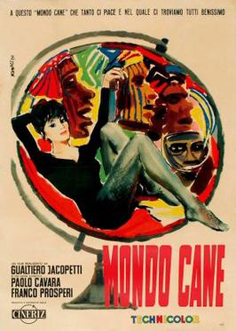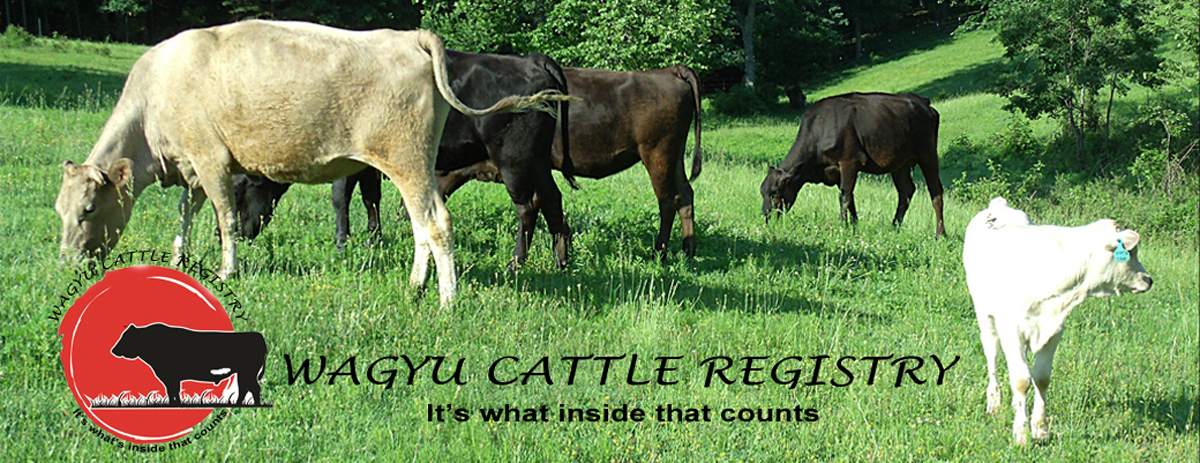About the Wagyu Cattle Registry
 With all the craziness of the 1960's there was a bizarre Italian movie documentary called “Mondo Cane”. It had a great theme song called “More” which Andy Williams and other vocalists made into a hit song. One segment of the film had to do with Wagyu cattle, showing the Japanese feeding them beer, massaging them, then serving them up at quality restaurants. This was probably the West's first exposure to Wagyu and probably the reason why, when breeders say they raise Wagyu, they are asked if they feed them beer and massage them.
With all the craziness of the 1960's there was a bizarre Italian movie documentary called “Mondo Cane”. It had a great theme song called “More” which Andy Williams and other vocalists made into a hit song. One segment of the film had to do with Wagyu cattle, showing the Japanese feeding them beer, massaging them, then serving them up at quality restaurants. This was probably the West's first exposure to Wagyu and probably the reason why, when breeders say they raise Wagyu, they are asked if they feed them beer and massage them.
Fourteen years after “Mondo Cane”, the first Wagyu were brought to the U.S.A. They were 2 Japanese Black Wagyu and 2 Japanese Brown (red) Wagyu bulls. No females! So these were bred mostly to Angus cows and all 4 bulls were used to avoid interbreeding. Eventually “purebreds” were achieved and in America they were considered one breed formed from the 2 Japanese breeds. The Purebred Wagyu had been improved for about 20 years and the 1990's saw a few more importations of Wagyu; this time females were included which started the rave for 100% “Fullblood” Wagyu. The 1990's ended the importation of Wagyu with the Japanese government declaring Wagyu cattle a national treasure and no live cattle or genetics could be exported.
So the Fullblood’s, with a limited gene pool, began to grow; for the most part reds and blacks were kept separate with a few exceptions. This was mainly due to the reds coming under control of what became the American Akaushi Association(AAkA) and all the blacks and some reds with the American Wagyu Association(AWA). Akaushi in Japanese means red cow.
About a decade ago the AAkA had allowed some of their genetics to go to Australia and from there some members of the AWA were able to get red Wagyu. Some fullblood reds were bred to fullblood blacks just as had been done with purebreds and are called red/black Wagyu. Very rarely a dilution crops up in breeding a red to a black and the resulting animal is a gray or blonde. When two dilution genes occur in an animal the result is a white color. These colors improve the great natural heat resistance of Wagyu.

The AWA made a rule effective January 1st, 2018 that only solid red and solid black Wagyu would qualify to register as Fullblood or Purebred Wagyu. This eliminated not only Blondes and Whites, but also a lot of Wagyu that have naturally occurring white markings. Many people were angry with this and other decisions and voted in a new President and board and hired a new Executive Director. There was hope for a return to registering Wagyu that DNA profiled as Wagyu. Wagyu are all about what's inside with the high marbling and not exterior color or markings. Anyhow, all hope was shattered as the new board voted to keep the rule.
So the need for a registry that is open to all Wagyu has arisen. Plus the outrageous costs of the AWA could be eliminated with a reasonable low cost registry. Thus the Wagyu Cattle Registry (WCR) is born, open to ALL Wagyu and at a price keeping more money in producers' pockets!
Wagyu Cattle Registry - © 2020. All rights reserved. Questions or comments, please contact us at: office@wagyuregistry.com
